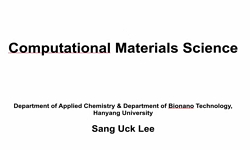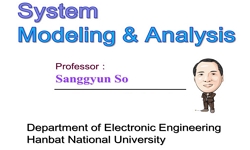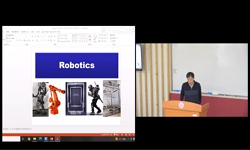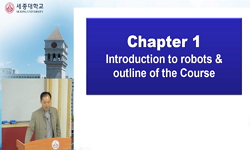Purpose: We previously described a new procedure specific module (Tube 3) to allow the practice of vesicourethral anastomosis after robot-assisted radical prostatectomy. Herein, we report a predetermined proficiency level of Tube 3 and preliminary val...
http://chineseinput.net/에서 pinyin(병음)방식으로 중국어를 변환할 수 있습니다.
변환된 중국어를 복사하여 사용하시면 됩니다.
- 中文 을 입력하시려면 zhongwen을 입력하시고 space를누르시면됩니다.
- 北京 을 입력하시려면 beijing을 입력하시고 space를 누르시면 됩니다.
https://www.riss.kr/link?id=A104590695
- 저자
- 발행기관
- 학술지명
- 권호사항
-
발행연도
2015
-
작성언어
English
- 주제어
-
등재정보
KCI등재,SCOPUS,SCIE
-
자료형태
학술저널
-
수록면
756-761(6쪽)
-
KCI 피인용횟수
0
- DOI식별코드
- 제공처
-
0
상세조회 -
0
다운로드
부가정보
다국어 초록 (Multilingual Abstract)
Purpose: We previously described a new procedure specific module (Tube 3) to allow the practice of vesicourethral anastomosis after robot-assisted radical prostatectomy. Herein, we report a predetermined proficiency level of Tube 3 and preliminary validation to explore whether this new module can lead to performance improvement in the da Vinci system.
Materials and Methods: Eight urology residents and three urology fellows performed the Tube 3 module 1 hour daily for 7 days. The learning curve was depicted through a scatterplot and the stable point was identified through the cumulative sum chart. Concurrent and predictive validations were performed with the da Vinci system. The mean time to complete the task and end product rating score between Tube 3 training group and no Tube 3 training group were compared.
Results: Concerning the learning curve, about 41 repetitions comprising about 5 hours were needed to achieve this stable point when the mean time to complete Tube of 384 seconds was set as a target. With regarding to the concurrent and predictive validation, there significant differences were evident in the mean time to complete 16 needle passages and the vesicourethral anastomosis and the end product rating score.
Conclusions: The virtual reality (VR) simulator can yield sufficient improvement in technical performance in Tube 3 within 5 hours. The acquired proficiency can be transferable to the vesicourethral anastomosis using the da Vinci system.
참고문헌 (Reference)
1 Sethi AS, "Validation of a novel virtual reality robotic simulator" 23 : 503-508, 2009
2 Sabbagh R, "Transfer of laparoscopic radical prostatectomy skills from bench model to animal model: a prospective, single-blind, randomized, controlled study" 187 : 1861-1866, 2012
3 Ou YC, "The learning curve for reducing complications of roboticassisted laparoscopic radical prostatectomy by a single surgeon" 108 : 420-425, 2011
4 Kang SG, "The Tube 3 module designed for practicing vesicourethral anastomosis in a virtual reality robotic simulator: determination of face, content, and construct validity" 84 : 345-350, 2014
5 Reznick R, "Testing technical skill via an innovative "bench station" examination" 173 : 226-230, 1997
6 Van Velthoven RF, "Technique for laparoscopic running urethrovesical anastomosis:the single knot method" 61 : 699-702, 2003
7 Wanzel KR, "Teaching technical skills: training on a simple, inexpensive, and portable model" 109 : 258-263, 2002
8 Binder J, "Robotically-assisted laparoscopic radical prostatectomy" 87 : 408-410, 2001
9 Liss MA, "Robotic surgical simulation" 19 : 124-129, 2013
10 Sterrett SP, "Robotic assisted laparoscopic radical prostatectomy: evolution and outcomes" 60 : 31-39, 2008
1 Sethi AS, "Validation of a novel virtual reality robotic simulator" 23 : 503-508, 2009
2 Sabbagh R, "Transfer of laparoscopic radical prostatectomy skills from bench model to animal model: a prospective, single-blind, randomized, controlled study" 187 : 1861-1866, 2012
3 Ou YC, "The learning curve for reducing complications of roboticassisted laparoscopic radical prostatectomy by a single surgeon" 108 : 420-425, 2011
4 Kang SG, "The Tube 3 module designed for practicing vesicourethral anastomosis in a virtual reality robotic simulator: determination of face, content, and construct validity" 84 : 345-350, 2014
5 Reznick R, "Testing technical skill via an innovative "bench station" examination" 173 : 226-230, 1997
6 Van Velthoven RF, "Technique for laparoscopic running urethrovesical anastomosis:the single knot method" 61 : 699-702, 2003
7 Wanzel KR, "Teaching technical skills: training on a simple, inexpensive, and portable model" 109 : 258-263, 2002
8 Binder J, "Robotically-assisted laparoscopic radical prostatectomy" 87 : 408-410, 2001
9 Liss MA, "Robotic surgical simulation" 19 : 124-129, 2013
10 Sterrett SP, "Robotic assisted laparoscopic radical prostatectomy: evolution and outcomes" 60 : 31-39, 2008
11 Stegemann AP, "Fundamental skills of robotic surgery: a multiinstitutional randomized controlled trial for validation of a simulation-based curriculum" 81 : 767-774, 2013
12 Kenney PA, "Face, content, and construct validity of dV-trainer, a novel virtual reality simulator for robotic surgery" 73 : 1288-1292, 2009
13 Sahabudin RM, "Development of robotic program: an Asian experience" 24 : 161-164, 2006
14 Hung AJ, "Concurrent and predictive validation of a novel robotic surgery simulator: a prospective, randomized study" 187 : 630-637, 2012
15 Hung AJ, "Comparative assessment of three standardized robotic surgery training methods" 112 : 864-871, 2013
16 Anastakis DJ, "Assessment of technical skills transfer from the bench training model to the human model" 177 : 167-170, 1999
17 Kang SG, "An effective repetitive training schedule to achieve skill proficiency using a novel robotic virtual reality simulator" 72 : 369-376, 2015
18 Kang SG, "A study on the learning curve of the robotic virtual reality simulator" 22 : 438-442, 2012
동일학술지(권/호) 다른 논문
-
- 대한비뇨의학회
- 구자윤
- 2015
- KCI등재,SCOPUS,SCIE
-
- 대한비뇨의학회
- Eric Chung
- 2015
- KCI등재,SCOPUS,SCIE
-
- 대한비뇨의학회
- Ben Dhaou Mahdi
- 2015
- KCI등재,SCOPUS,SCIE
-
A novel one lobe technique of thulium laser enucleation of the prostate: ‘All-in-One’ technique
- 대한비뇨의학회
- 김연주
- 2015
- KCI등재,SCOPUS,SCIE
분석정보
인용정보 인용지수 설명보기
학술지 이력
| 연월일 | 이력구분 | 이력상세 | 등재구분 |
|---|---|---|---|
| 2023 | 평가예정 | 해외DB학술지평가 신청대상 (해외등재 학술지 평가) | |
| 2020-01-01 | 평가 | 등재학술지 유지 (해외등재 학술지 평가) |  |
| 2019-03-12 | 학회명변경 | 한글명 : 대한비뇨기과학회 -> 대한비뇨의학회 |  |
| 2016-03-04 | 학술지명변경 | 외국어명 : 미등록 -> Investigative and Clinical Urology |  |
| 2016-01-15 | 학술지명변경 | 한글명 : Korean Journal of Urology -> Investigative and Clinical Urology |  |
| 2011-01-01 | 평가 | 등재학술지 유지 (등재유지) |  |
| 2009-02-21 | 학술지명변경 | 한글명 : 대한비뇨기과학회지 -> Korean Journal of Urology외국어명 : The Korean Journal of Urology -> 미등록 |  |
| 2009-01-01 | 평가 | 등재학술지 유지 (등재유지) |  |
| 2007-01-01 | 평가 | 등재학술지 유지 (등재유지) |  |
| 2005-01-01 | 평가 | 등재학술지 유지 (등재유지) |  |
| 2002-01-01 | 평가 | 등재학술지 선정 (등재후보2차) |  |
| 1999-07-01 | 평가 | 등재후보학술지 선정 (신규평가) |  |
학술지 인용정보
| 기준연도 | WOS-KCI 통합IF(2년) | KCIF(2년) | KCIF(3년) |
|---|---|---|---|
| 2016 | 0.14 | 0.14 | 0.13 |
| KCIF(4년) | KCIF(5년) | 중심성지수(3년) | 즉시성지수 |
| 0.13 | 0.12 | 0.314 | 0.23 |






 KCI
KCI






